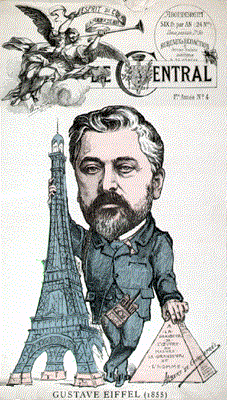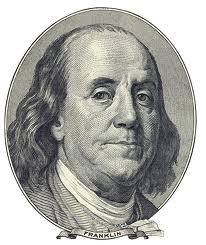Fertile plains cover two-thirds of France, which is the largest country in Western Europe. With more than half the land under cultivation, France leads the European Union in food exports. The mountain ranges are mostly in the south, including the Alps, Pyrenees, and Massif Central. Forests cover one-third of the land area in France and are a source of environmental and scenic wealth.
The north is humid and cool, while the south is dry and warm. Favorable conditions for grape growing in the south make French wines world-renowned—and France the world's largest producer. The nation sets a fast pace in telecommunications, biotechnology, and aerospace industries. Sophia Antipolis, a booming high-tech complex on the Riviera, attracts scientists from throughout Europe. Coal and steel industries are concentrated in the northeast near major coalfields.
The government continues to play a large role in directing economic activity. The national road network is the world's densest, and the high-speed train (TGV) runs at speeds of 270 kilometers (167 miles) per hour or more. Both road and rail transport tourists, helping to make France the most visited country on Earth. Nuclear power, which supplies 80 percent of France's electricity, enjoys widespread support, in part because there is virtually no domestic oil. Government policies provide for a 35-hour workweek and five weeks of paid vacation annually.

Paris has long been France's cultural, political, and business epicenter. In the early 19th century Napoleon Bonaparte divided large, traditional provinces into small departments, which have since been regrouped into larger, regional units. Low turnout in the 2002 elections was interpreted as voter apathy due to the dominant influence of Paris. Amendments to the constitution, approved in 2003, give more political power to the country's 22 regions and 96 departments.
Heavy losses in both world wars bled France of labor, wealth, and prestige. After World War II, France's colonial subjects, from Algeria to Vietnam, struggled for independence. Immigration from France's former colonies, especially Algeria, contributes to some four million persons of Arab descent living in France today. An independent defense doctrine, launched by President Charles de Gaulle in 1966, has turned the nation into one of the world's largest arms suppliers. France maintains ties with its former colonies through aid, trade, and military pacts. The French have developed modern political ties with former colonies still under French administration. Overseas departments (officially part of France) with their own elected governments are French Guiana, Guadeloupe, Martinique, and Reunion. Territories with varying degrees of autonomy are French Polynesia, French Southern and Antarctic Territories, Mayotte, New Caledonia, St.-Pierre and Miquelon, and Wallis and Futuna.
France is situated in Western Europe, 1 hr flight from London/England, 5.5 hrs from New York/USA. On the France outline you will see the little island of Corsica, which belongs to France, also in the French flag colors:-)
France Geography: France shares borders with Belgium to the North East, Germany and Luxemburg in the East as well as with Switzerland, Italy to the South East. The Pyrenees, a mountain range to the South of France, form a natural border between Spain and France. The highest mountain in France is the Mont Blanc, which is 4,810m high and stands at the border between France and Italy .
Mainland France is divided into 27 regions and these into 101 departments . The Mediterranean island of Corsica belongs to France too. Of the 101 departments there are also 5 ROM (regions d’outre mer or overseas regions) also belonging to France: French Guyana in South America, Guadeloupe and Martinique in the Caribbean, La Reunion and Mayotte in Africa in the Indian Ocean.
France Attractions
The Romanic language comes from Latin and is today the second most studied language after English and spoken by more than 300million people around the world as first or second language.
Famous French People
Gustave Eiffel (1832-1923), the famous French engineer who build the Eiffel Tower in Paris, also designed the Statue of Liberty which stands in New York's harbour.
France is famous for the beaux-arts, the many great painters, sculptors. Famous French painters are Claude Monet and Pierre-Auguste Renoir, Edgar Degas, Paul Cezanne and Auguste Rodin is certainly one of the most famous French sculptors.
French composers which are very famous are: Maurice Ravel (Bolero) and Georges Bizet (Carmen). Children all around the world love French literature, like the famous “The Three Musketeers” by Alexandre Dumas and “The Little Prince” by Antoine de Saint-Exupery.
French political leader Napoleon Bonaparte (1769-1821) was born on Corsica. He reformed the French laws. He declared himself Emperor of the French in 1904. Napoleon’s army was defeated by the British in the Battle of Waterloo (now in Belgium) in 1815. He was exiled to the island St. Helena in the Mediterranean Sea where he died in 1821.
The bread you will get in France in a typical French "boulangerie" (bakery) is mostly white wheat bread or bread sticks, called "baguette".
Here is some typical French food:
Interesting Video About France
Paris is the capital city of France and a French departement (75). Situated on the banks of the river Seine in north-central France, ...
The north is humid and cool, while the south is dry and warm. Favorable conditions for grape growing in the south make French wines world-renowned—and France the world's largest producer. The nation sets a fast pace in telecommunications, biotechnology, and aerospace industries. Sophia Antipolis, a booming high-tech complex on the Riviera, attracts scientists from throughout Europe. Coal and steel industries are concentrated in the northeast near major coalfields.
The government continues to play a large role in directing economic activity. The national road network is the world's densest, and the high-speed train (TGV) runs at speeds of 270 kilometers (167 miles) per hour or more. Both road and rail transport tourists, helping to make France the most visited country on Earth. Nuclear power, which supplies 80 percent of France's electricity, enjoys widespread support, in part because there is virtually no domestic oil. Government policies provide for a 35-hour workweek and five weeks of paid vacation annually.

Paris has long been France's cultural, political, and business epicenter. In the early 19th century Napoleon Bonaparte divided large, traditional provinces into small departments, which have since been regrouped into larger, regional units. Low turnout in the 2002 elections was interpreted as voter apathy due to the dominant influence of Paris. Amendments to the constitution, approved in 2003, give more political power to the country's 22 regions and 96 departments.
Heavy losses in both world wars bled France of labor, wealth, and prestige. After World War II, France's colonial subjects, from Algeria to Vietnam, struggled for independence. Immigration from France's former colonies, especially Algeria, contributes to some four million persons of Arab descent living in France today. An independent defense doctrine, launched by President Charles de Gaulle in 1966, has turned the nation into one of the world's largest arms suppliers. France maintains ties with its former colonies through aid, trade, and military pacts. The French have developed modern political ties with former colonies still under French administration. Overseas departments (officially part of France) with their own elected governments are French Guiana, Guadeloupe, Martinique, and Reunion. Territories with varying degrees of autonomy are French Polynesia, French Southern and Antarctic Territories, Mayotte, New Caledonia, St.-Pierre and Miquelon, and Wallis and Futuna.
 |
| Couple Walk Through Ruins of St. Lo France: A civilian couple walks through ruins of the heavily bombed ruins in the city of St. Lo, France, August 1944. (Photo Credit: Getty) |
 |
| Damage in Trafalgar Square, London: London, England 1942. Soldiers examine buildings in Trafalgar Square damaged by German bombs. (Photo Credit: Corbis) |
France Facts: Map and Geography
France Geography: France shares borders with Belgium to the North East, Germany and Luxemburg in the East as well as with Switzerland, Italy to the South East. The Pyrenees, a mountain range to the South of France, form a natural border between Spain and France. The highest mountain in France is the Mont Blanc, which is 4,810m high and stands at the border between France and Italy .
Mainland France is divided into 27 regions and these into 101 departments . The Mediterranean island of Corsica belongs to France too. Of the 101 departments there are also 5 ROM (regions d’outre mer or overseas regions) also belonging to France: French Guyana in South America, Guadeloupe and Martinique in the Caribbean, La Reunion and Mayotte in Africa in the Indian Ocean.
France Attractions
- Paris: Eiffel Tower, Notre Dame, Louvre, Montmartre, Arc de Triomphe, river Seine and many other great attractions
- Versailles : castle of French kings
- Lasceaux Caves for 17,000 year old rock paintings
- Cote d’Azur for turquoise blue sea and great beaches
- Corsica: in the Mediterranean sea
- French Alps: great skiing and snowboarding
- Mont St. Michel: Island with high tide
- Provence for lavender fields and old historic towns like Avignon
 |
| Mont St. Michel: Island with high tide |
Interesting Facts: French Language facts
French is the official language in France and it is also the second major language in Europe.The Romanic language comes from Latin and is today the second most studied language after English and spoken by more than 300million people around the world as first or second language.
Famous French People
 |
| Caricature of Eiffel, published in 1887 at the time of "The Artist's Protest" |
France is famous for the beaux-arts, the many great painters, sculptors. Famous French painters are Claude Monet and Pierre-Auguste Renoir, Edgar Degas, Paul Cezanne and Auguste Rodin is certainly one of the most famous French sculptors.
French composers which are very famous are: Maurice Ravel (Bolero) and Georges Bizet (Carmen). Children all around the world love French literature, like the famous “The Three Musketeers” by Alexandre Dumas and “The Little Prince” by Antoine de Saint-Exupery.
French political leader Napoleon Bonaparte (1769-1821) was born on Corsica. He reformed the French laws. He declared himself Emperor of the French in 1904. Napoleon’s army was defeated by the British in the Battle of Waterloo (now in Belgium) in 1815. He was exiled to the island St. Helena in the Mediterranean Sea where he died in 1821.
French Food
The French main dishes contain: fresh vegetables, meat and cheeses. French cuisine is well known for its freshness and high quality dishes. The French people enjoy their main meal in the evening and this meal often consists of three courses starting with a "hors d’oeuvre", a starter dish which often is soup or a salad and bread, then the main course and afterwards some cheese or fruit.The bread you will get in France in a typical French "boulangerie" (bakery) is mostly white wheat bread or bread sticks, called "baguette".
Here is some typical French food:
- Baguette: long bread stick
- Croque Monsieur/Croque Madame: ham and cheese grilled sandwich while Croque Madame is the more heavy version with ham, cheese and a fried egg on top
- Escargots: snails
- Foie Gras: Goose liver pate
- Pain au chocolat: similar to a croissant filled with chocolate
- Crepes: French very thin pancakes with filling
- Ratatouille: vegetable stew
kids-world-travel-guide.com
travel.nationalgeographic.com
Interesting Video About France
Paris France - Paris Francia
Nans ventriloque -la France a un incroyable talent
nans est un enfant qui sais faire de la ventriloquie ici il est aux auditions il arriverait en final et se classera deuxieme.
La France vue par la tele russe (VOSTF)
Debut octobre 2012, une equipe de la premiere chaine publique russe Rossiya 1 est venue en reportage en France. Comme ...
What is it like living in France?
The video describes house buying and living in France.
France bans all Muslims' political protests
After a French newspaper sparked global outrage by publishing obscene images of the Prophet Muhammad, the state decided
Tour de France 2012 Stage 17 Highlights ITV
With help from Chris Froome, Bradley Wiggins survived the tough peaks of the Pyrenees on a stage won by





























